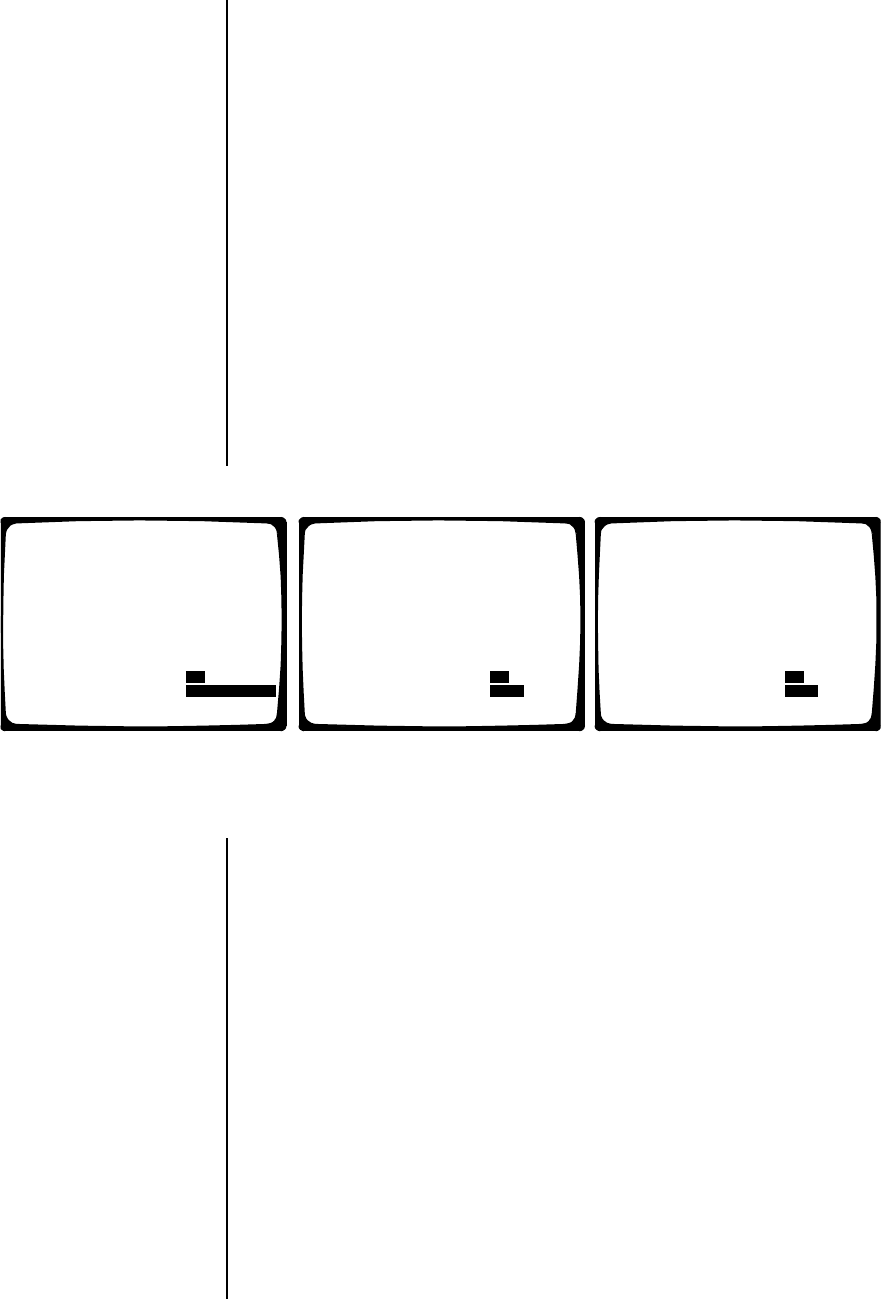
30 Pelco Manual C1995M-A (10/01)
Spot Monitor Display/Responds To
If you want the spot monitor to switch to cameras that have alarms, select BLANK,
SEQUENCE, or TRACK MAIN, then under RESPONDS TO select ALARM. If you are
using the spot monitor for normal video and you do not want alarms to override what
you are observing, select NONE.
BLANK – Lets you view an individual camera, but you cannot run a sequence. An
alarm will override the camera you are viewing. When the alarm goes away, the
screen returns to the camera you were viewing. Press the SEQUENCE button to
return to a blank screen.
SEQUENCE – Lets you view an individual camera or run a sequence. An alarm will
override what you are observing. When the alarm goes away, the screen returns to the
camera or sequence you were viewing.
TRACK MAIN – The spot monitor follows the camera switching that occurs on the
main monitor. This feature is used when a KBD4000 keyboard is connected to the
multiplexer for controlling moveable cameras on the main monitor.
Unit ID
This is the multiplexer’s address. If your system has more than one multiplexer, each
multiplexer must have its own address. (Incorrect Unit ID and Comm Type entries are
common causes of playback and P/T control problems. Set Unit ID to a numeric
value—and not 000.) Refer to Figure 21.
Figure 21. Monitor Menus for Multiple Units in One System
Comm Type
• If you have a stand-alone multiplexer, it must be the master.
• If you have a KBD4000/KBD4002/KBD4000V keyboard in polled communication
mode (keyboard switch 4 OFF): This is the normal mode of communication. If
you have one multiplexer connected to a keyboard, the multiplexer must be set
for master. If you have more than one multiplexer connected to a keyboard, one
multiplexer must be the master and all others slaves (refer to Figure 21). The
keyboard must be connected to the master multiplexer.
• If you have a KBD4000/KBD4002/KBD4000V keyboard in non-polled mode
(keyboard switch 4 ON): All multiplexers are slaves and the keyboard is the
master. Refer to your keyboard manual for more information about polled and
non-polled modes.
• If you have an MX4000SVR server: If you have one multiplexer connected to a
server, it must be set for master. If you have more than one multiplexer con-
nected to a server, one multiplexer must be the master and all others slaves
(refer to Figure 21). The server must be connected to the master multiplexer.
4. When you finish all the changes you want to make, go to EXIT or BASIC SET-UP.
5. Press the +/- button to exit programming mode or to go to the System (Basic) Setup
menu.
ADVANCED SYSTEM SET-UP
DATE FORMAT
PASSWORD
FRONT PANEL CONTROL
MAIN MENU EXIT BASIC SET-UP
MM-DD-YY
DISABLED
ENABLED
MAIN MONITOR DISPLAY
SPOT MONITOR DISPLAYSEQUENCE
RESPONDS TO NONE
RESPONDS TO ALARM
UNIT ID.
COMM TYPE
MULTIPLEXER 2
002
SLAVE
ADVANCED SYSTEM SET-UP
DATE FORMAT
PASSWORD
FRONT PANEL CONTROL
MAIN MENU EXIT BASIC SET-UP
MM-DD-YY
DISABLED
ENABLED
MAIN MONITOR DISPLAY
SPOT MONITOR DISPLAY SEQUENCE
RESPONDS TO NONE
RESPONDS TO ALARM
UNIT ID.
COMM TYPE
MULTIPLEXER 1
MASTER (KBD-T/D)
001
ADVANCED SYSTEM SET-UP
DATE FORMAT
PASSWORD
FRONT PANEL CONTROL
MAIN MENU EXIT BASIC SET-UP
MM-DD-YY
DISABLED
ENABLED
MAIN MONITOR DISPLAY
SPOT MONITOR DISPLAY SEQUENCE
RESPONDS TO NONE
RESPONDS TO ALARM
UNIT ID.
COMM TYPE
MULTIPLEXER 3
003
SLAVE
NOTE:
Remember, one
multiplexer must be the
master. If your system uses
multiple multiplexers, one
must be programmed as
master and the others as
slaves.
NOTE:
Do not program the
unit ID from the keyboard. It
must be programmed from
the front panel.
